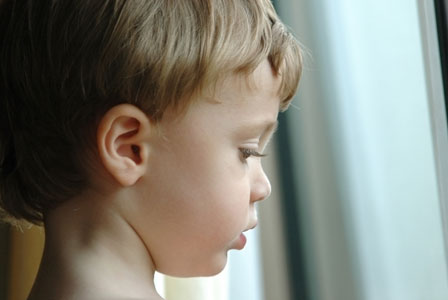
Seasonal Affective Disorder doesn't just plague adults during the darker months — children can also become heavily affected by this form of seasonal depression. Make sure you know these signs of SAD and how to prevent it in your kids.
Does your child
have SAD?
The SAD facts
Seasonal Affective Disorder, or as it's commonly referred to, SAD, is a common type of depression that typically hits adults when the summer sun is no longer shining and the darker, gray days of winter start to set in. However, SAD is a disorder that can also hit children hard and oftentimes, goes undiagnosed. According to the American Academy of Pediatrics, 10 to 20 percent of Americans may feel the effect of this type of seasonal depression each year, and although the onset of SAD often doesn't arrive until around age 20, if you have a child who is prone to forms of depression throughout the year, this is something you should put on your radar for when the days start getting shorter and the sun is shining less.
What to look for
The signs and symptoms of Seasonal Affective Disorder in children are similar to those of adults who suffer from SAD, the biggest being a change in personality from one that is typically healthy and happy, to one that is more withdrawn and moody.
For children, you may first notice signs of SAD in their schoolwork or ability to listen in class. They may also not be as inclined to play with friends or have you schedule play dates. The signs of SAD may even appear in their eating habits — are they craving carbs and comfort foods more than usual?
Coming out of the darkness
The best thing that you can do for your child, if you think that he or she has Seasonal Affective Disorder is to be conscious of what they are going through. While you often hear of adults with SAD sitting next to light lamps to get through the winter months, that is not a common treatment for children. For most children, Seasonal Affective Disorder can be treated at home. However, if your child already suffers from forms of depression or is taking an anti-depressant medication, special considerations may want to be taken, under the guidance of your doctor.
Instead, fight the SAD with these simple techniques:
- Get outside more: Even if it's rainy and cold, the sun is shining somewhere behind those clouds and getting outside not only gets your child moving, but gets some fresh air in her lungs too.
- A healthy diet: More fruits and veggies, less sluggish carbs. If your meal plans lately have been heavy, lighten them up with some protein-filled, colorful options.
Revamp your family's diet with the 10 healthiest foods your kids need to be eating>>
- Schedule sleep: Children who suffer from SAD crave sleep. Be conscious of scheduling appropriate bedtimes that will keep them on track, rather than over- or under-doing it.
- Talk about it: Chat with your child about how he's feeling and explain to him that he may be feeling this way simply because of the season. Putting words to how he's feeling may go a long way in improving things.
- Keep life simple: Wearing your child out in an attempt to get her moving isn't going to help. Schedule downtime as well as activities to keep balance in your SAD sufferer.
- Moms get SAD too: And so do dads. Being a functioning parent while suffering from Seasonal Affective Disorder can be challenging, to say the least. Be sure to take care of yourself during the winter months as well!
Please remember that your best resource is your child's doctor. If you think your child or anyone else in your family is experiencing symptoms of Seasonal Affective Disorder, please make an appointment with your healthcare provider.
More on kid's health
Eat, move, nurture: Raising healthy kids
Winter health and safety tips for kids
5 Heart health lessons for kids